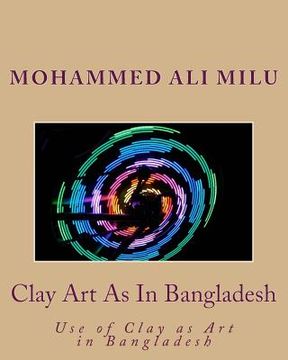Synopsis "Clay Art As In Bangladesh: Use of Clay as Art in Bangladesh (in English)"
Terracotta, often mistaken as clay tiles, is actually baked earth (pora maati). There are specific themes and subjects based on which terracotta art is produced. A variety of items is made of terracotta - plaques, wall tiles, lamps, pitchers, flower vase, pottery, coin bank, candle-stands, dolls, and more. The designs of these burnt clay products reflect folk tales, picture of everyday life, artistic symbols denoting peace, love and understanding. In Bangladesh, some of the most contemporary and prominent pieces of terracotta art are dominant on plaques and murals portraying our Liberation War-or rural Bangladesh depicting many birds, fish and animals and agricultural activities. Members of the potters' community, known in Bangla as kumars (formally known as kumbhokars) who usually bear the title Pal, are generally found in large settlements in mrit pollis (potters' villages) across the country. Terracotta artists say, although this art is one of the oldest in the sub-continent and was spread out across the whole of this country, is practised in only a few prominent localities today - Dhamrai, Shimulia, Kagojipara, Kakran in Savar; Baufol in Barisal; Shariatpur; Mirzapore in Tangail; Rayer Bazar in Dhaka (almost extinct) and a few other remaining places in the country where pottery villages exist. This art was practised in Bengal from the earliest through early medieval to medieval times and even persisted in Hindu monuments till the mid-nineteenth century. It was found in the earliest civilisations like Harappa and Mohenjodaro. The Vishnupur (17th century) temple of (West Bengal) and Kantaji's temple (18th century) of Dinajpur are the finest examples of this form in this region. Ancient terracotta murals are found in their finest forms in Paharpur, Mahasthangarh and Maynamati dating back from the 6th century to as far back as 2000 A.D. Some plaques depicting ladies with exotic hairdo found in Mahasthangarh throw enough light on the affluence and elegance of the people inhabiting the region. Most recent specimen of the art can be found in Pabna, Jessore, Faridpur, Rajshahi, Barisal and some other places in Bangladesh. The clay which is used are derived from Barisal and Savar called Doash and Etel maati referred to as primary and secondary clay, amalgamated in a mixture, often called common clay. These clays can withstand high temperature when inside the furnace and make the best quality of products. Other potters use clay from different parts of the country. Terracotta artisans say that a type of white clay is collected from Netrokona, reddish clay from Baufol Barisal and pinkish clay which comes from Tangail and these different soils produce different types of products and add their own texture and colour to the items after baking. The whole process can be explained like this: these different types of clay used for making terracotta items are collected from different regional locations. The assorted materials are mixed proportionately and dried under the hot sun so as to allow any sort of moisture that may be present in it to evaporate. Then, the mixture of this wet clay is filtered through a fine sieve to remove pebbles, dirt or even rice grains.

